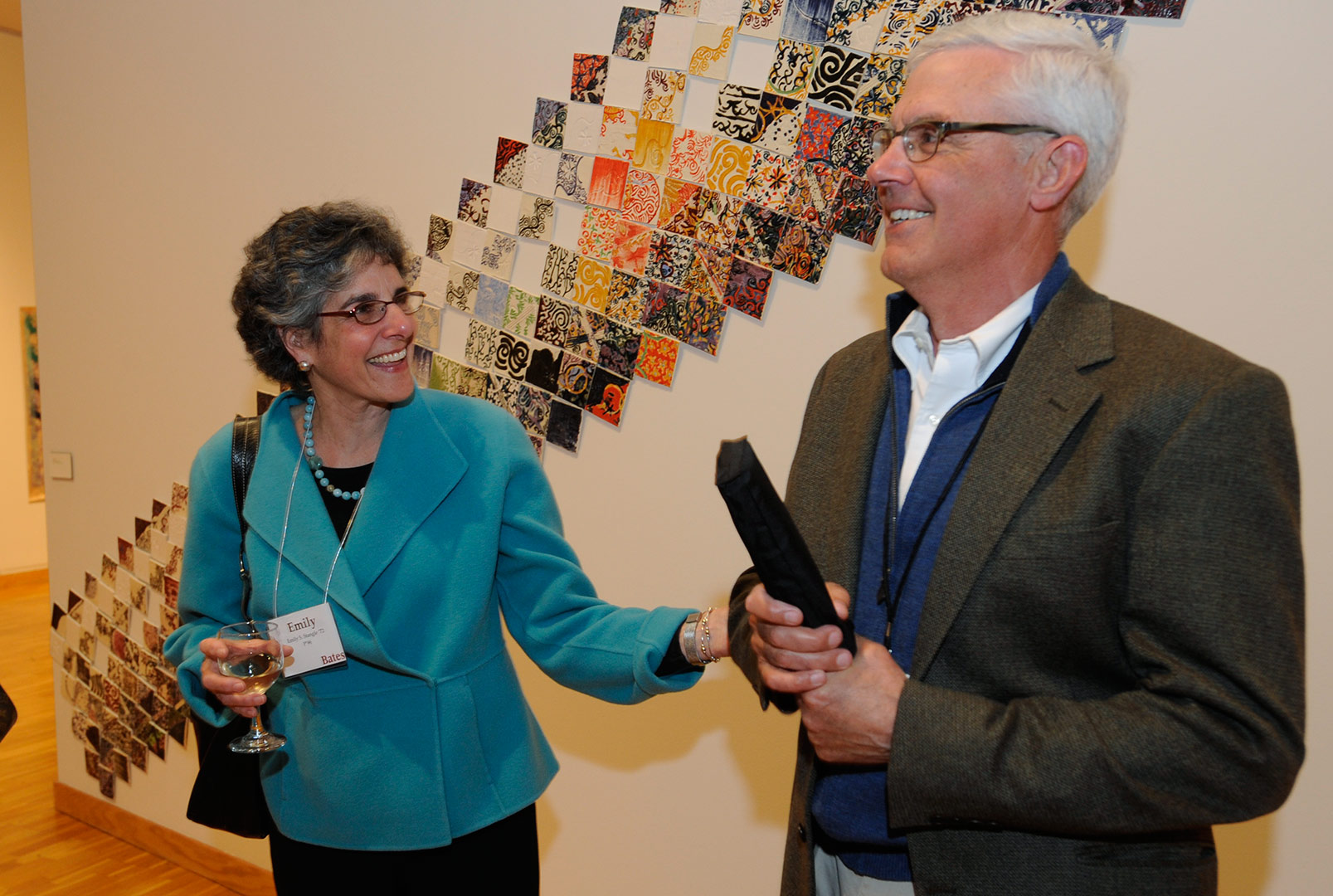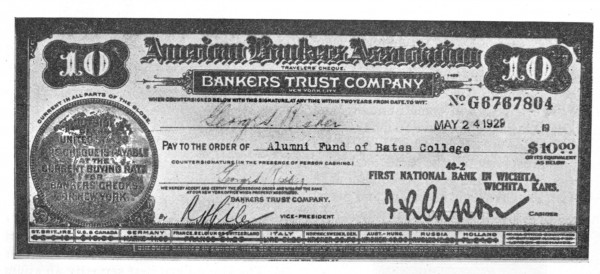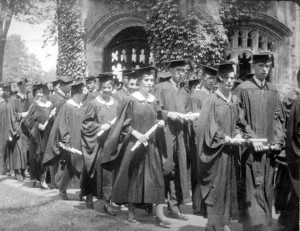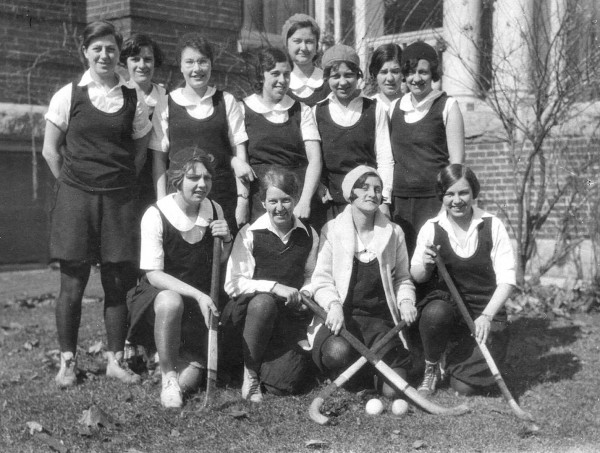
‘Opportunity not importunity’: a story of who really founded the Bates Fund
The college’s first 20 acres of land? A gift, from the people of Lewiston.
The first building, Hathorn Hall? A gift, from Seth and Mary Hathorn of Woolwich.
The name, Bates College? A gift, from Benjamin Bates.
Bates and most private U.S. colleges came to be through philanthropy. Yet the tradition of alumni making regular annual gifts — known as the Bates Fund here — didn’t take hold until many years later.
Mindful that some 2,000 Bates alumni will make their annual Bates Fund gifts this week, here’s a brief history of the fund, and how alumni took the lead in creating a robust giving tradition that, along with parent gifts, provides more than $6 million for academics, athletics, financial aid and student programs each year.
The Bates Fund got going in 1929 when 81-year-old George S. Ricker, Class of 1867, made the inaugural gift of $10 to the Bates College Alumni Fund, authorized the year before by Alumni Association vote.
A graduate of Bates’ first college class, Ricker was in some ways prototypical. A minister with a social justice commitment, Ricker was the longtime superintendent of the Society for the Friendless in Kansas, an advocacy group for ex-cons and prisoners.
He hand-delivered his gift ($135 in today’s dollars) after traveling from Wichita, Kan., to Bates for Commencement 1929, an act that was noted in a Bates Alumnus story about the new fund, carrying the headline “Opportunity Not Importunity.”
Meanwhile, the first U.S. college alumni fund had begun about 40 years before, as Yale was busy playing financial catch-up with Harvard. Problem was, while Harvard could tap the wealth of Boston’s Brahmins, there was nothing comparable in New Haven, according to Yale: A History.

George S. Ricker of the Class of 1867 made the first gift to the new Alumni Fund, now the Bates Fund, at Commencement 1929.
So in June 1890, in response to the “widespread sentiment” among Yale alumni supporting a “systematic endeavor to increase the resources of the University,” Yale voted to establish an alumni fund.
A few years later, President William Jewett Tucker created a similar fund at Dartmouth to bolster that college’s meager annual revenues. An alumni fund, he said, is “peculiarly adapted to our constituency, among whom many are willing and eager to do something regularly, while few only are able to make single large gifts or great bequests.”
At Harvard, President A. Lawrence Lowell had the opposite opinion, even as the university launched its alumni fund somewhat late, in 1925.
“Wrongly conceived,” he declared. An alumni fund “will do more harm than good, for it will serve the alumni with an excuse to contribute smaller sums than they might likely give for a specific purpose.”
(How wrong he was: A central tenet of higher education fundraising is that alumni funds and “specific purpose” campaigns are perfectly complementary; it’s not either/or.)
The Alumni Association recruited and organized volunteers, who asked their fellow alumni to make gifts to support annual faculty salaries.
At Bates, reduced enrollments combined with galloping inflation during World War I put a real scare into the college. The Alumni Association (not the college administration, mind you) responded by creating the Bates Alumni Loyalty Fund, modeled after a similar fund at Brown.

Graduates leave the Chapel after Commencement 1930, the first year of the Bates Fund. That year, the fund’s goal included career support for graduates. Photograph courtesy of Muskie Archives and Special Collections Library.
The Alumni Association recruited and organized volunteers, forebears of today’s Bates Fund class agents, who asked their fellow alumni to make gifts to support annual faculty salaries.
“A result not anticipated, but one of great importance, came out of the organization and work of the Loyalty Fund,” noted the Bates Alumnus. “A scattered, unorganized and untrained group of college graduates learned to think and to work together.”
President Clifton Daggett Gray relied on this motivated alumni volunteer network to solicit gifts for the Million Dollar Fund Campaign that kicked off in 1922 and funded Alumni Gymnasium and Gray Athletic Building.
So it was that at Commencement 1928, alumni voted to create a permanent Bates Alumni Fund.
In doing so, they put forth a set of fundraising objectives that would fit just fine in a contemporary pitch for the Bates Fund. That is, they sought support for the basics:
For the library, “the intellectual dynamo” of the college. For students and their “athletic, musical, forensic and other activities.” And for life after Bates, including career development and “opening up opportunities” in the fields of education, business, industry and other realms.
Sources:
Harvard Magazine
Yale: A History
Bates Alumnus, November 1929





